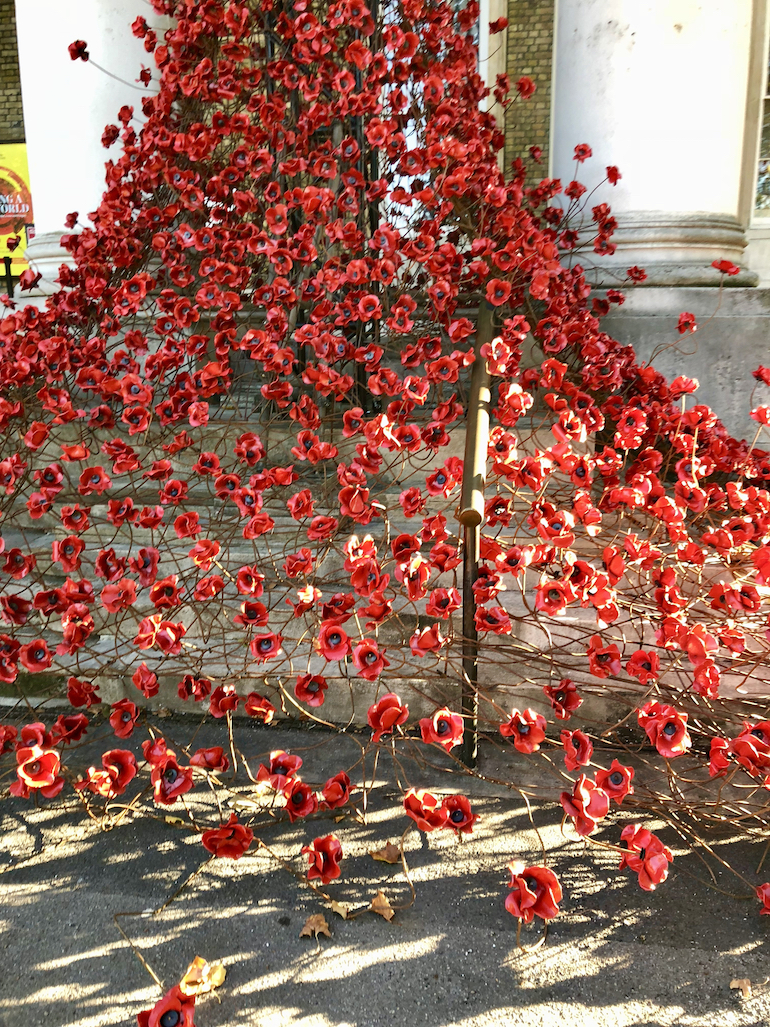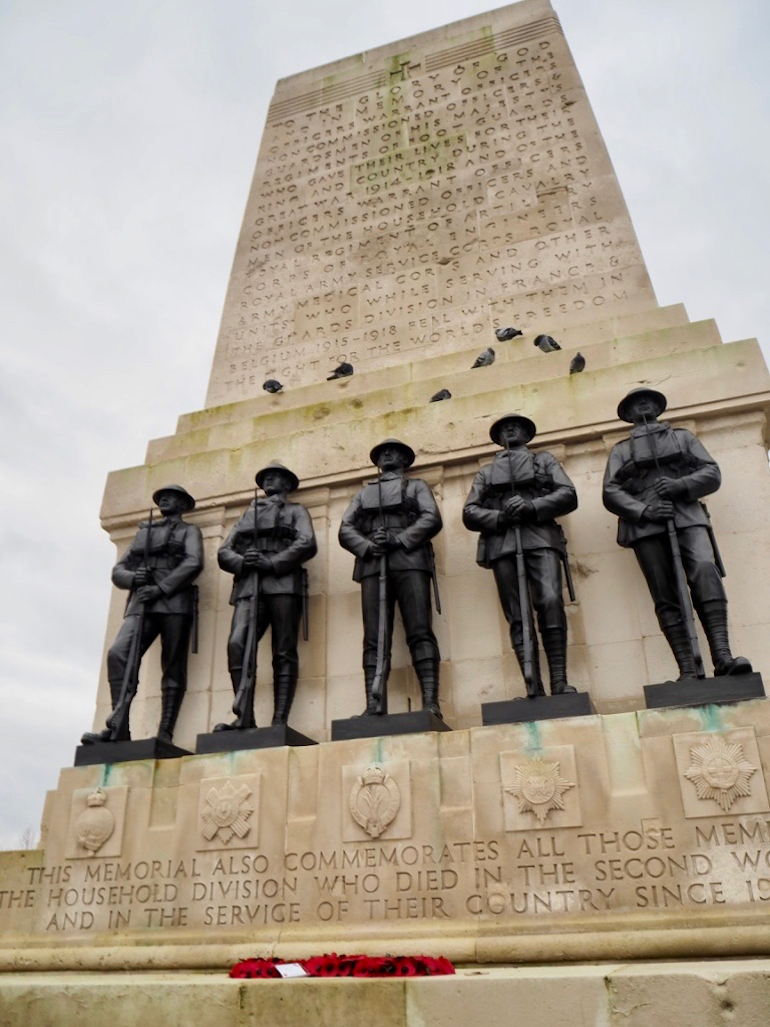Blue Badge Tourist Guides taking groups around London and throughout Britain at this time of year will often be asked by visitors about the red poppy flower which British people are wearing. These commemorate those who were killed in the First and Second World Wars and in other conflicts the United Kingdom has been involved during the last century. The poppy appeal raises around £50 million every, the money going to service charities.

Imperial War Museum London – Weeping Windows Poppies Tour. Photo Credit: © Ursula Petula Barzey.
Armistice Day
The armistice ending the First World War was signed on 11th November 1918. By tradition, this took place “at the eleventh hour of the eleventh day of the eleventh month”, whereas in fact the treaty was signed around five in the morning after all-night negotiations in a railway carriage in the Forest of Compiegnes in France. It came into force at 11 am but, even though news of its signing was common knowledge, fighting continued and over 2,700 men died on the final day of fighting. Armistice Day is now commemorated every year on 11th November to mark the signing of this agreement.
The Queen attends a service of commemoration at Westminster Abbey every year to commemorate Armistice Day. This year, to commemorate the centenary of the armistice, she is expected to attend with the German president Frank-Walter Steinmeier on Sunday, 11 November. She will also lay a wreath at the Whitehall Cenotaph, unveiled on 11 November 1920.
A further public remembrance of those who gave their lives will come from the Oscar-winning film director Danny Boyle, who has organised Pages of the Sea, in which the names of British soldiers who were killed will be cast into the sea on biodegradable paper from beaches around Britain.

British Military: Guards Division War Memorial opposite Horse Guards Parade in London. Photo Credit: © Ursula Petula Barzey.
The total military death toll from the First World War was around ten million, five and a half million on the allied side and four and a half million on the Axis side, with a further eight million civilian casualties. Military deaths were generally lower in the Second World War, whereas the overall number of those killed between 1939 and 1945 was higher – around sixty million because of the large number of civilian casualties.
One of the last to die was the poet and decorated soldier Wilfred Owen, news of whose death was received by his family on the day peace was announced. His words “My subject is War, and the pity of War. The Poetry is in the pity.” are written on the memorial to the poets of the First World War in Poets’ Corner.
Other war poets include Owen’s friend and mentor Siegfried Sassoon, who had written the ‘Soldier’s Testament’ in 1917, a public letter criticising the continuation of the fighting. He was sent to Craiglockhart Psychiatric Hospital where he met Owen whom he helped to find his voice. Sassoon lived on for almost fifty years after the war, while Robert Graves, author of I, Claudius, lived to the age of ninety despite having been wounded at the Somme and reported as missing, presumed dead.

British Military: Guards Division War Memorial opposite Horse Guards Parade in London. Photo Credit: © Ursula Petula Barzey.
The Soldier by Rupert Brooke
Another famous poet to die in the First World War was Rupert Brooke, killed by an insect bite rather than a bullet in 1915, and buried on the Greek island of Skyros. Brooke’s death fulfilled the prophecy inherent in his famous sonnet The Soldier, lines from which can be found on the graves of British soldiers all over the world:
If I should die, think only this of me:
That there’s some corner of a foreign field
What is forever England. There shall be
In that rich earth a richer dust concealed;
A dust whom England bore, shaped, made aware,
Gave once her flowers to love, her ways to roam,
A body of England’s, breathing English air,
Washed by the rivers, blest by suns of home.
And think, this heart, all evil shed away,
A pulse in the eternal mind, no less
Gives somewhere back the thoughts by England given;
Her sights and sounds: dreams happy as her day;
And laughter, learnt of friends, and gentleness,
In hearts at peace, under an English heaven.







Leave a Reply